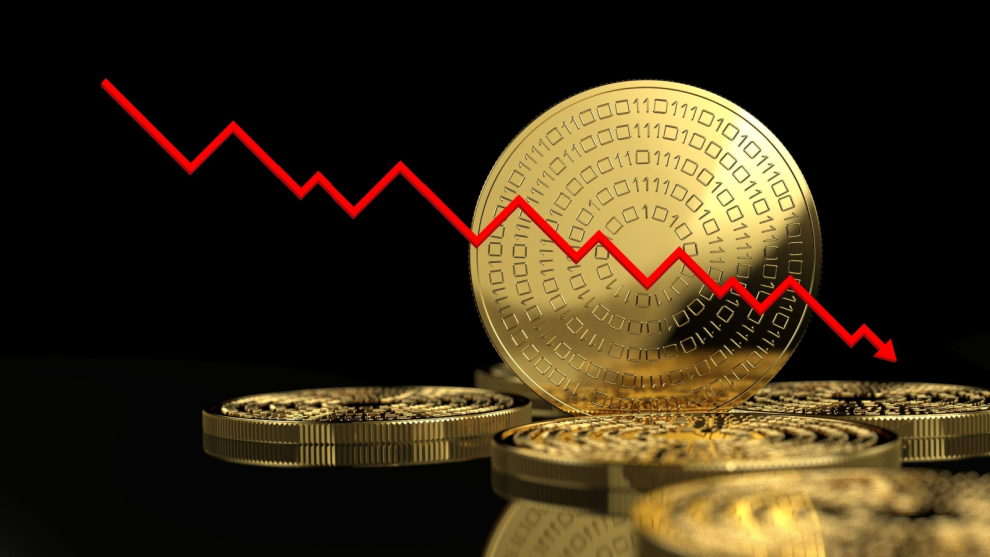The U.S. Securities and Exchange Commission (SEC) filed a lawsuit against Coinbase (NASDAQ:COIN) last week, accusing the crypto exchange of violating securities laws. This comes after a year of tension between the two entities and marks the US SEC’s second action against a major crypto exchange. Similar to the case with Binance, the US SEC claims that Coinbase failed to register as a securities exchange, broker, and clearing house as mandated by law. The lawsuit also alleges that some of the cryptocurrencies offered on Coinbase are considered securities. With this in mind, there are a few high risk cryptos that were named in the lawsuit you should be keenly aware of. Most are down considerably following the news but could have further to fall from here.
High Risk Cryptos: Algorand (ALGO-USD)
Algorand (ALGO-USD), a prominent blockchain platform aiming to rival Ethereum, offers developers the advantage of faster and more cost-effective dApp development. Its recognition surged in 2022 when it became the official blockchain for FIFA, facilitating the launch of FIFA’s NFT ecosystem.
Algorand stands out in the crypto market as a pioneering blockchain platform. It aims to establish a global economy by facilitating seamless digital asset exchange. With its advanced pure proof-of-stake consensus mechanism, Algorand ensures scalability, security, and decentralization. The platform’s ability to handle high transaction volumes quickly and efficiently attracts investors.
Algorand has faced challenges in gaining developer adoption, with only 25 DeFi dApps in its ecosystem, as per DeFi Llama data. These dApps hold a combined total value locked (TVL) of over $142 million. Among them, AlgoFi holds a market dominance of 48%. Only nine of these dApps have a TVL exceeding $1 million. Additionally, CryptoSlam data reveals a significant decline in trading volume for Algorand NFTs in recent months.
Polygon (MATIC-USD)
Polygon (MATIC-USD) is poised for growing demand as it addresses Ethereum’s (ETH-USD) scalability challenges. As a leading Layer-2 scaling solution, Polygon aims to tackle the scalability issue that has been hindering Ethereum’s progress. With Ethereum’s ongoing struggle for scalability, Polygon, and other Layer-2 solutions are gaining momentum as a solution.
Polygon’s potential as a long-term investment is evident at its current price of approximately $0.64. With its focus on enhancing Ethereum’s speed and cost-efficiency, Polygon stands out in the DeFi landscape. Its utilization of zero-knowledge EVM rollups distinguishes it from other scaling solutions, providing optimized transaction processing and compatibility with Ethereum’s code. Developers find Polygon appealing due to its unique approach and promising growth prospects.
Polygon’s impressive partnerships with major brands in launching NFT projects contribute to its appeal. As a prominent cryptocurrency like Ethereum, Polygon offers stability and growth potential, making it a favorable choice for investors. However, this recent regulatory overhang could hurt this project’s appeal, at least in the near-term.
Filecoin (FIL-USD)
Filecoin (FIL-USD) is a project with a market capitalization of over $1.5 billion. With the cloud industry thriving, it’s plausible that some of this sector’s investments may flow into projects like Filecoin, particularly for those seeking decentralized alternatives with enhanced privacy and censorship resistance.
Filecoin offers a cost-effective and decentralized alternative to traditional cloud storage providers. With the introduction of Filecoin Web Services (FWS), which competes with AWS, Azure, and Google Cloud, the project’s developers have recognized the opportunity for growth. The affordability, privacy, and censorship-resistant nature of FWS make it an appealing choice for individuals and institutions seeking top-tier cloud storage solutions.
Of course, Filecoin’s unique upside catalysts could offset some near-term weakness from these announcements. Thus, this is a token I’m watching, in case this selloff becomes overdone.
On the date of publication, Chris MacDonald did not have (either directly or indirectly) any positions in the securities mentioned in this article. The opinions expressed in this article are those of the writer, subject to the InvestorPlace.com Publishing Guidelines.





